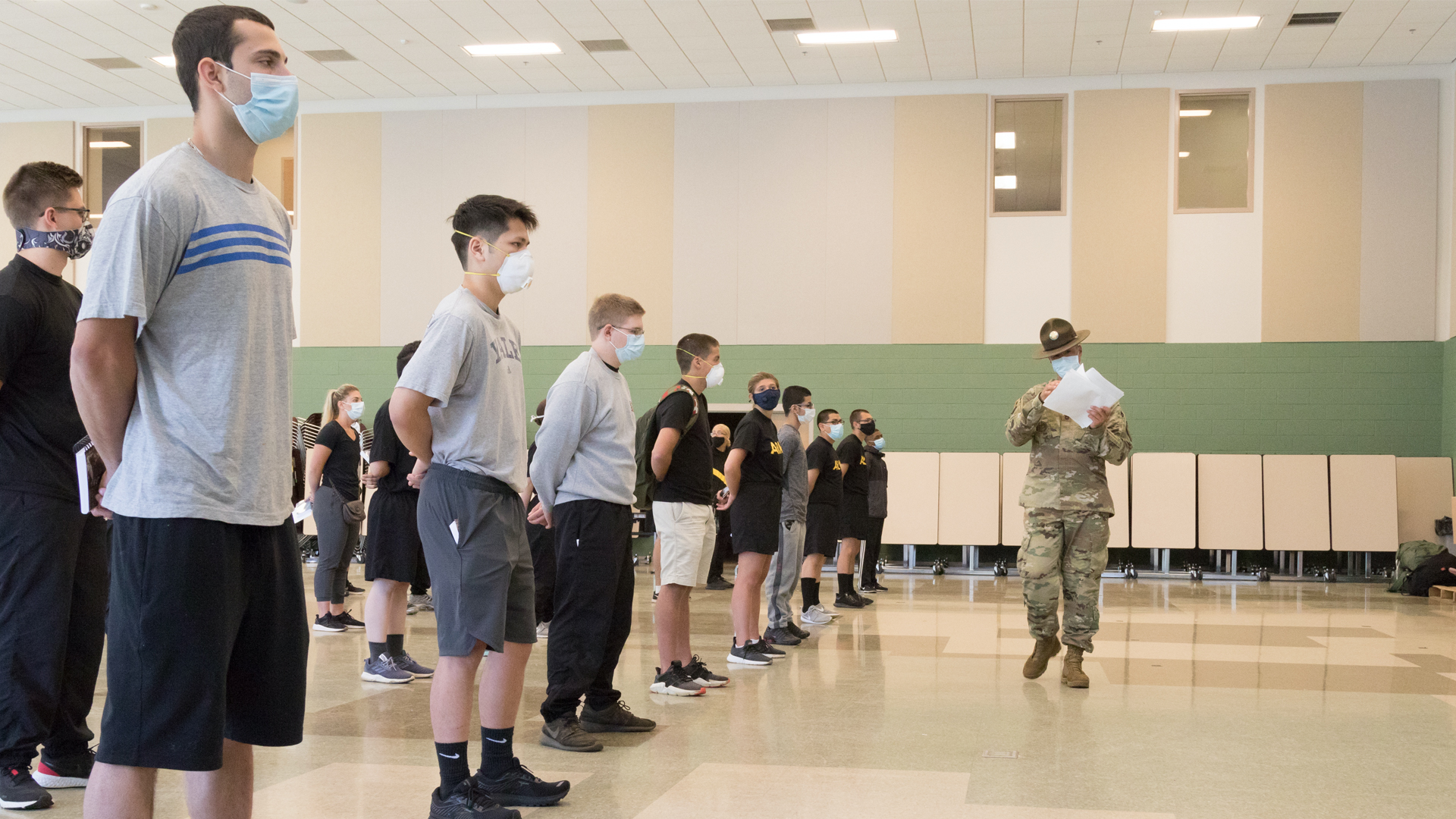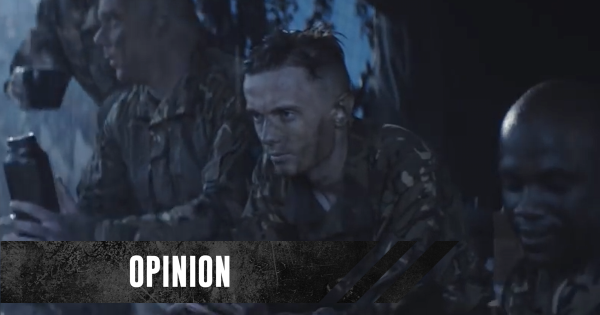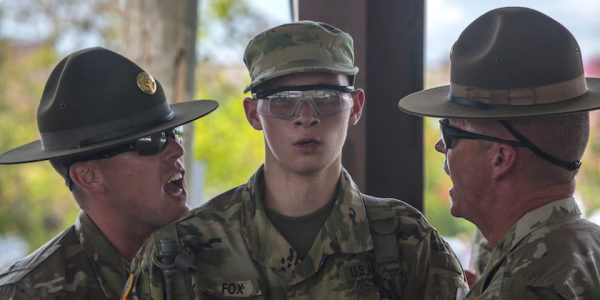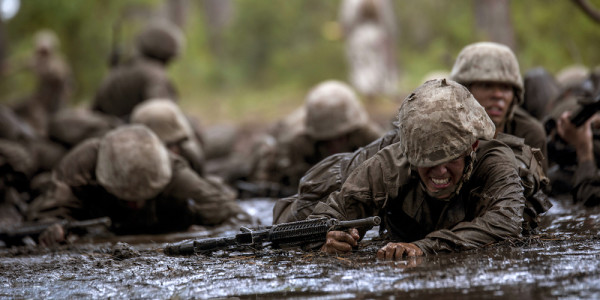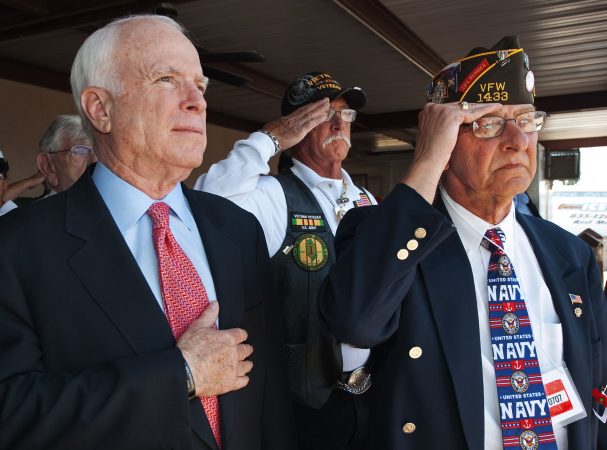With the U.S. Army only reaching 40% of its recruitment target this fiscal year as of the end of June, at this point it is a question of what the Army will do moving forward. Even the most charitable estimate of how recruiting will perform in the next two months means — along with the Army’s decision to cut down its force size by up to 28,00 due to an already poor recruiting market — that the Army will most likely miss its recruiting goals by nearly 40,000 personnel in the next two years.
The institutional refusal to acknowledge multiple issues with recruiting and other systemic failings over the years due to the belief that the Army will “continue rolling along” has now led to the wheels flying off into oncoming traffic.
Several variables affect the decision to join, but the very basics of what brings people to any job are being missed by current recruiting efforts. The quality of life an employer offers is often the deciding factor for those looking for work, and the quality of life the Army offers appears to be poor indeed. The Secretary of the Army and other Army leaders have verbalized what they feel is affecting the perception of the military among young Americans: negative narratives about life in the Army. No recruiting message or ad effort can make up for the perception without concrete proof and changes.

Last year, the Army had its highest suicide rate in 100 years; this year there were multiple Army suicide resources websites featuring broken links — a failure by the service to show the absolute bare minimum of care. And the Army has still not created a regulation for anonymous mental health reporting under the Brandon Act passed in 2022, named after a sailor who died by suicide in 2018 after being tormented by supervisors for seeking mental health treatment
The lack of accountability for sexual assaults and harassment continues, as recently illustrated with the Army giving a slap on the wrist to an officer who motor-boated a subordinate by allowing him full retirement with pension and no prosecution; racism plagues military academies along with the force and its leadership; military pay has not kept up with inflation; the on-base housing system is rife with mismanagement and poor standards of living and barracks continue to have unsafe living conditions.
On top of these ongoing systemic issues, the Army is not clearly communicating things that would draw recruits to the service in the first place: the basics such as pay, job opportunities, and adventure. As a continuation of our previous article, we provide three main points of consideration for the Army in its recruiting quests that can update its advertising efforts both on and offline, and provide additional data for future recruiting years.
GoArmy.com must effectively inform viewers
The number of media platforms available have diffused the effects of legacy advertising. While national video and radio advertising lags behind, the greatest challenge to Army advertising is not the commercials, but rather the goarmy.com website — the hub for Army recruiting where all advertisements and social media platforms send users to learn more and to make contact with recruiters. It is the main link from the social media accounts of individual recruiting stations and all army social media sites. It should follow the words of Maj. Gen. Alex Fink, head of Army marketing, who said in June that “the Army has what Gen Z is looking for in an employer. They just don’t know it.” GoArmy.com must fill this information gap as the source that draws candidates to recruiters.
We previously mentioned the delay in getting in touch with a recruiter, but the bigger issues lie within the site’s layout and efforts to inform potential recruits. Designers should put themselves in the seat of a person considering the Army with no military affiliation. Then they should try navigating the site, with its bland explanations of the Army’s history, organization and ranks. Then one can move to looking at Military Occupational Specialties (MOS) which are never really explained other than a very basic occupational description of each job and an MOS number. To see further MOS details, recruits have to go to Instagram hoping a video exists or use Google search to find a Reddit megathread.
Yet the most basic deficiency is at the basic pay page, featuring a pay chart of base pay with an annual salary at each pay grade. Promotions are not noted, which leads any observer to wonder when they occur. For those who don’t know anything about military pay, this is the most basic information the Army needs to communicate effectively. A solution to this would be to include the automatic promotions to E-2 (6 months), E-3 (12 months), and E-4 (24 months) while noting that advances to E-5 and E-6 are based upon personal performance, but generally occur between years four to eight. Then the page should summarize annual salaries from this perspective of a recruit starting as an E-1 advancing through the ranks, using a narrative to explain how a private enters the Army and typically progresses through promotions and bumps in pay that occur over the first several years of service.
Moving to the total compensation page, a police officer with four years on the job is compared to an E5 with the same service time. But today’s potential recruits are often not looking that far out and see the Army as a stepping stone of two to four years before moving to a different career path. Cutting the timeline down to two years puts this into a better perspective and provides a comparison at the E4 rank (which is automatically achieved in the promotion system). Rather than a police officer, the Army should take the recruits’ perspectives. In two years, without advanced education, a better comparison would be a retail job at $15-18/hour.
While the Army’s educational benefits are generally the No. 1 draw, this also is poorly explained. The most well-known, the Post 9/11 GI Bill, is explained, but an example would greatly benefit potential enlistees. This is again a point where a narrative works. A young enlistee can leave after three years of service with his full GI Bill benefit from Fort Bragg, North Carolina with an acceptance letter to UNC-Chapel Hill where he is charged in-state tuition.

Here’s the reality of this fantastic benefit: The Post 9/11 GI Bill picks up the tuition of $8,980 per year plus a housing allowance of $14,688 (tax free) per year and $1,000 (again tax free!) annually for books which are paid directly to the veteran. The total 36 months of benefits, which should cover a complete four-year degree when factoring in summers, yields a total package of over $98,000 in benefits. And this is for an in-state public school in a moderate cost-of-living area! For a school like Stanford, the amount jumps to $252,000. Add in that a soldier can, through tuition assistance, likely finish 1-2 years of school while serving, and the GI Bill suddenly extends into covering graduate studies as well.
One last change we suggest would be regarding housing. Single soldiers, who comprise over 80% of new recruits, live in barracks. But the site provides little visual evidence that can attract recruits; a picture of a building exterior is not going to motivate enlistees. But showing examples of rooms at several main posts, even ones that are somewhat aged, will at least provide a more realistic view of Army housing. For married troops, basic allowance for housing (BAH) should also be discussed in greater depth. What does the BAH money look like in many areas and how is it paid regarding taxes? A narrative again should be used here.
Complementing goarmy.com, if the Army wants to educate on benefits and pay, it should create an online video covering these topics and can use this example as a base. Nothing official exists outside private social media creators and it provides a great chance to educate a population that remains unaware.
While the Army’s larger recruiting professional accounts, such as Facebook, Instagram, and Youtube are well-maintained and updated with a wide variety of photos, videos and informational screenshots, youth interest in several of these platforms continues to fade. Platforms such as Instagram allow users to ask about joining, but responses are minimal and significant two-way interactions about Army life lag, with the moderator directing recruits to goarmy.com. As such, we see a significant population of potential enlistees turning to Reddit’s growing subreddit r/Army, and other platforms such as TikTok
Social media outreach
After attaining 40,000 members in its first year of existence, the Army’s subreddit has grown to over 225,000 members. It allows users, most often veterans, soldiers, non-military members with Army interests, and potential recruits, to ask questions about Army careers, moral dilemmas, mental health, and soldier life in general to include enlistment and MOS information. To keep out trolls and excess “noise,” moderators such as u/Kinmuan quickly delete irrelevant and spam posts to maintain a respectable site. One of the key points he makes is that Reddit tends to attract a stronger level of dialogue between parties with moderators able to minimize trolling and harassment.
While critical of the Army at times, Kinmuan is also very quick to explain the benefits that come with service. He has openly discussed advertising efforts at length to include engaging Army Recruiting Command (USAREC) and its advertising entity. He feels that the Army’s tentativeness toward social media and comfort with antiquated cold calls helped to create the current environment through an unwillingness to rapidly adapt to contemporary digital systems.
Much of the challenge on Reddit, according to Kinmuan, lies in the control of the page. While the Army subreddit moderators are happy to welcome representatives from USAREC and incorporate them, the question of who would control interactions remains. Further, Kinmuan noted in conversations with us that USAREC officials considered the idea of assigning a few recruiters to the subreddit to find leads, link them with recruiting stations instantly, but then asked him a perplexing question: “Who would get credit for those leads if/when they joined?”
Reddit also is known for the “Ask Me Anything” (AMA) sessions where a person with keen subject awareness, such as a military MOS, opens a session for outside users to ask about their experiences. The Navy does this well with a prime example here. Even Sgt. Maj. of the Army Michael Grinston has used it with significant success through his public affairs officer, who also remains active on the subreddit. The option to reach an interested population and provide in-depth information about MOS opportunities and realities gives recruits less ambiguity about selecting their MOS and life in the Army.
In contrast to Reddit, which has gained traction over the past five years and continues to grow rapidly, TikTok remains blacklisted on government devices. The Army doesn’t even attempt to share social media posts from its GoArmy Instagram or other such accounts on the platform. But this platform, even with concerns about its relationship with the Chinese government, is absolutely thriving with younger millennials and Gen Z. As an example of its popularity, an anonymous unofficial Tiktok account created July 6 called GoArmyvideo, downloaded videos from other GoArmy accounts and posted them. A video on the GoArmy Instagram account which had 28,000 views and 193 comments after one month garnered 95,000 views and over 200 comments on Tiktok in 96 hours.
The fear of Chinese misuse and data gathering is not something to ignore, but the question arises of how different the misuse and big data accumulation is from the Army’s wide usage of Instagram, Facebook and Google, where data can also be collected and misused? This is not a call to allow the use of Tiktok during sensitive operations, but if potential recruits are on the platform, and recruiters are using it as a tool to contact or get in contact with those interested in joining the military, the rewards may outweigh the risks.
Regardless of the social media platform, a final concern is that the Army’s most recent social media guide calls for soldiers to only post positive messages on social media sites, a point of view that has been echoed by leaders throughout the force, with much controversy. This is ineffective and troublesome: problems do exist as we mentioned in the introduction. Denying quality of life issues, and denouncing veterans who care to make these issues public and demand change accomplishes nothing: this is a classic case of the “Streisand effect,” which not only attempts toxic false positivity, but also brings out more troops and veterans to discuss and magnify quality of life issues.
Rather than pushing for pure positivity that recruits can clearly see through, the Army should embrace honesty on these platforms and not fear soldiers stating they work past 1700 some evenings, or spend a month in the field for training, or that physical training is early in the morning, or that they rotate to a training center for 4-6 weeks each year. There is little benefit to guarding the realities of Army service.
Consult with recruiters and new soldiers on what works and doesn’t
The Army must obtain insight from current recruiters regarding what messages and media are working; furthermore the Army should also be asking why advertising is not working from the perspective of the recruited. Why are we not asking our newest military members what brought them to the Army, especially those who joined with no previous military affiliation? Currently, little information in this regard is gathered from recruiters and recruits in the form of rich qualitative research that gives more depth to messages, media use, and the process of joining.
For example, current Army advertising, like most advertising, is assessed by sample populations to determine effectiveness; but these are prone to response bias and have no post-consumption monitoring to determine if such an advertisement led to interest and an eventual enlistment. A more effective action would be to examine troops who recently raised their right hand and joined. We should seek the answers as to why they made such a decision. Questions should include: What brought them to the Army? What messages and on what platforms attracted them? What advertising ideas do they have that could attract more of their peers? What advertisements fell flat? How would they improve the current recruiting process to include the Army’s explanation both online and in-person?

For recruiters, their dilemmas lie in current advertising that is not resonating with much of the candidate demographic and that often includes mixed messages. The Army should be obtaining feedback on advertising preferences from the large pool of candidates they meet. Further, while video, radio and online media matter, recruiters feel that they currently do not have the resources required to conduct face-to-face recruiting events.The Army should further investigate if either digital or face-to-face advertising affects recruits’ decisions and which of the two they felt was more effective. It should also ask how recruiting pamphlets can be improved to spark interest.
Meanwhile, medical screening has become more challenging over the past several decades as fewer Americans are deemed fit for duty. Both new soldiers and recruiters should also be asked about how information regarding the MEPS (Military Entry Processing Stations) process is communicated and what can be done better. Additionally, how can the Army better communicate how medical waiver processing and disqualifications work so that candidates better understand their potential and a timeline if a waiver is required? This would include asking about the process’s explanation on the goarmy.com website.
It’s worth also discussing the implementation of the military’s new MHS Genesis program – which automatically pulls a prospective recruit’s medical records and allows doctors at military entry stations to flag potential medical issues – and ways in which it can be streamlined and better explained to recruits to minimize recruits choosing to back out due to unexpected delays in medical processing. While Gen. Joseph Martin, the Army’s Vice Chief of Staff, testified to Congress July 19 that MHS-Genesis processes appear to be improving, this remains a critical point of enlistment friction worth further examination.
For such an analysis, we’d recommend using the co-orientation model which correlates how current messages and media use hit or miss the mark from both the recruiters on the ground and potential enlistees. Findings would provide a look at concurrences and gaps from both parties that can then be considered for current and future platform use and advertising. Of note, as the Army continues to struggle to recruit those without military affiliation, such a study should focus on those new troops from all MOS branches. Rich data can be acquired with as little as 20 to 30 interviews from both parties and can provide the Army with a new data set that compliments the DOD youth surveys in answering the “how” and “why” that quantitative surveys often neglect.
Such an endeavor could truly provide a new way to adapt efforts to new generations, especially if done on a regular basis. Trends can be captured at a faster rate and provide data for more flexible adjustments in recruiting efforts. It would help give evidence to changing platform use, such as in the future when TikTok loses its luster to the next “great” platform. This gives the Army time to adapt its advertising through such new media and feedback on recruits’ desires combined with how recruiters see tech best used.
For such a design, it would require sampling across the United States to ensure inclusion of diverse demographics such as local population sizes, ethnic/racial makeup and a wide range of socioeconomic environments. Commonalities and gaps would provide strong data points for consideration such as the aforementioned platform and message, but also length of advertising, potential information overload, and even simple atmospherics within advertising that recruits assess as important.
Of course, the other solution for the Army is to simply do what it’s done in the past — stick with the status quo, await an economic downturn which may come sooner than expected, and then hopefully regain its recruiting numbers as unemployment rises and individuals seek out the Army. This would be a failure that leads to no recruiting modernization or changes in structural efforts — things that are antiquated and need refinement — and would just continue the lackluster recruiting cycle in the long term. In a world where China is moving to expand its influence in the Asia-Pacific region and the war in Ukraine rages on, requiring a renewed national security focus on Europe, a U.S. Army that can not draw in new recruits is a national security issue for America and its allies.
+++
Daniel Johnson is a former infantry officer and journalist who served with the United States Army in Iraq, and recently completed his MA through the Hussman School of Journalism and Media at UNC–Chapel Hill where he will return in the fall as a 1st year PhD Student. He is the author of #Inherent Resolve, a book on his unit’s experience in the war against ISIS.
LTC James Machado is an active-duty U.S. Army Foreign Area Officer and currently a Goodpaster Scholar in the Advanced Strategic Planning and Policy Program (ASP3) as a 2nd year PhD student at the Hussman School of Journalism and Media at UNC Chapel Hill. The views here are those of the author alone and do not represent the positions of the U.S. Army, the Department of Defense, or any part of the U.S. Government.
